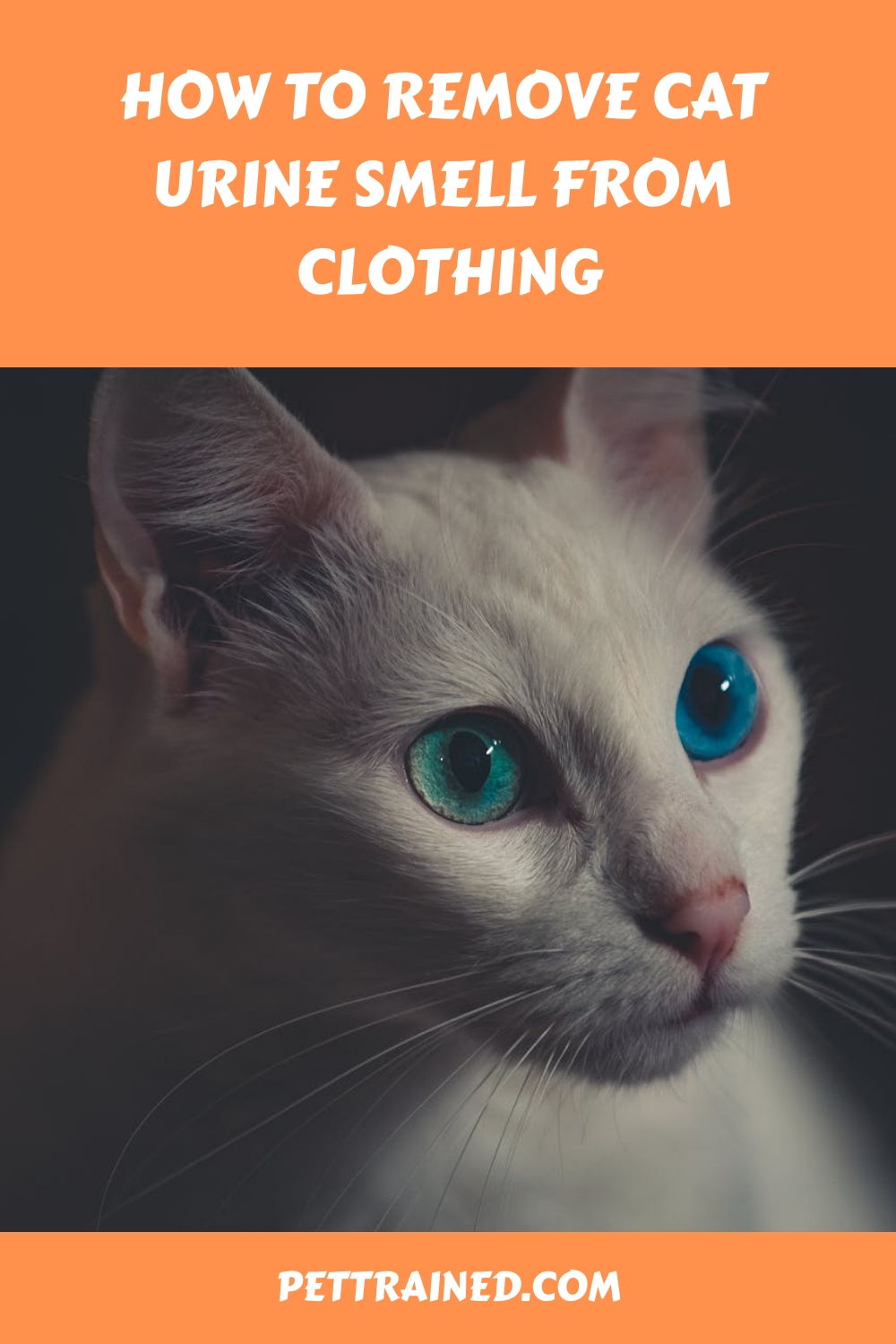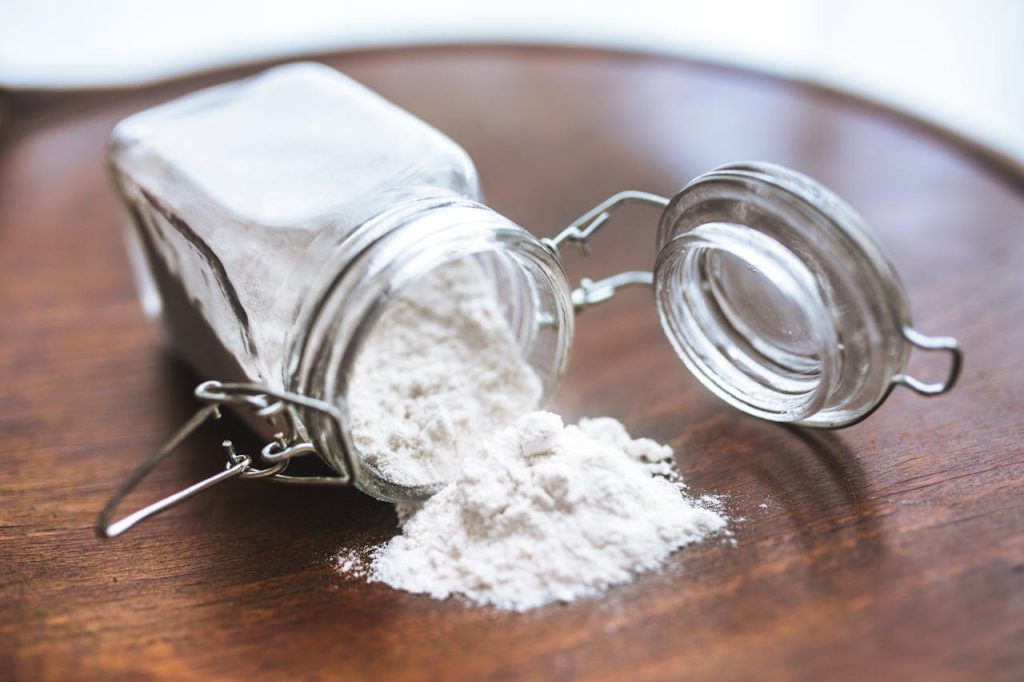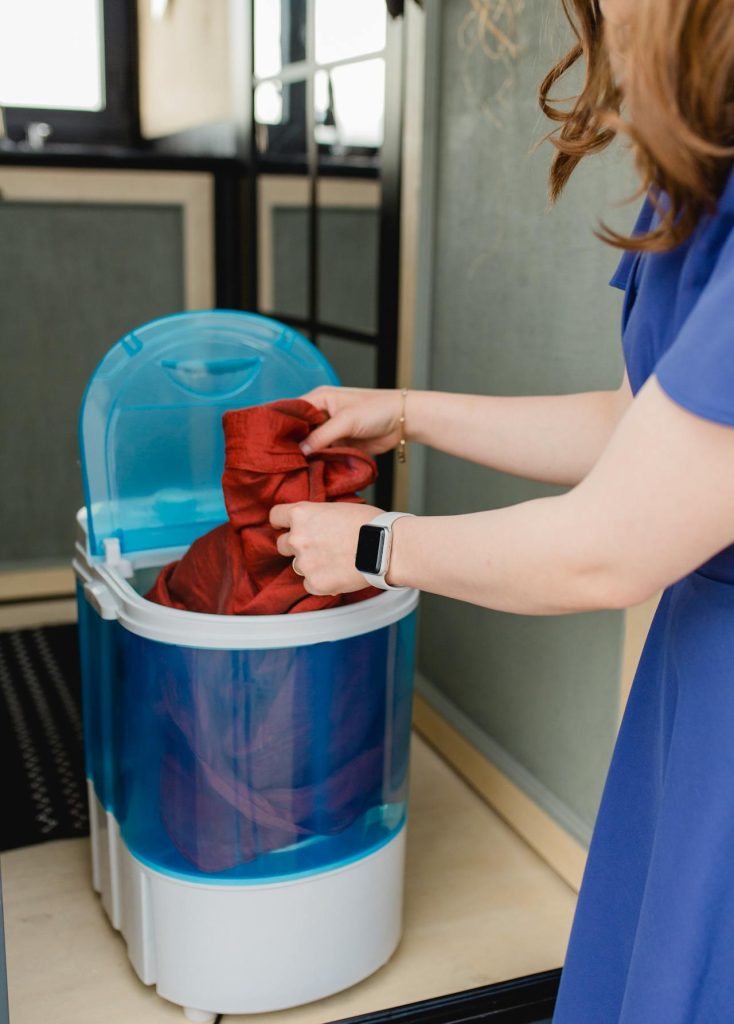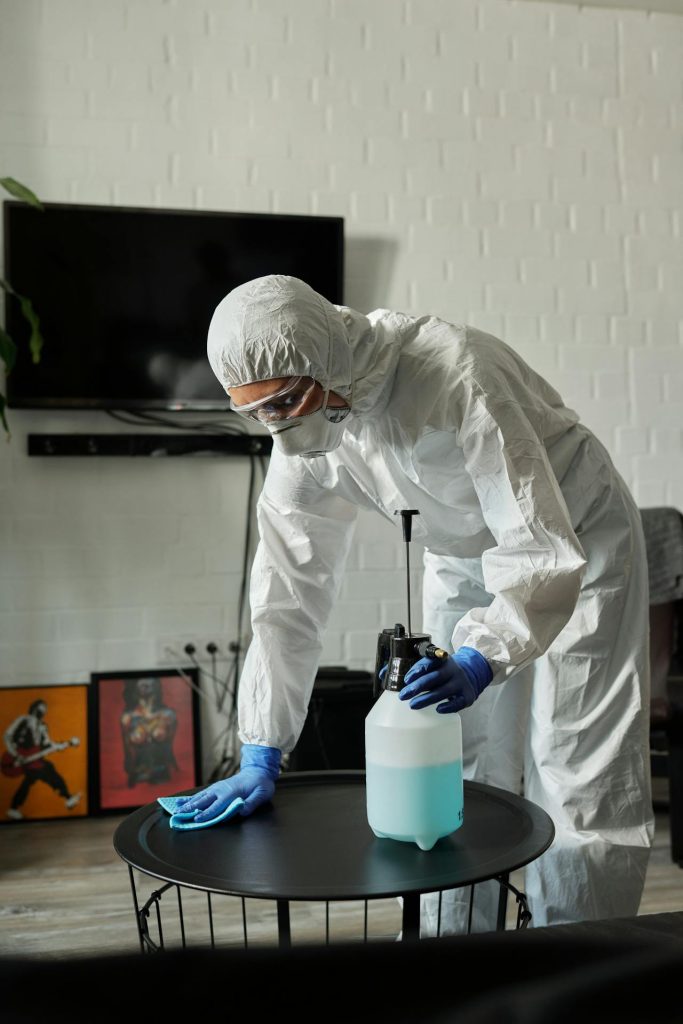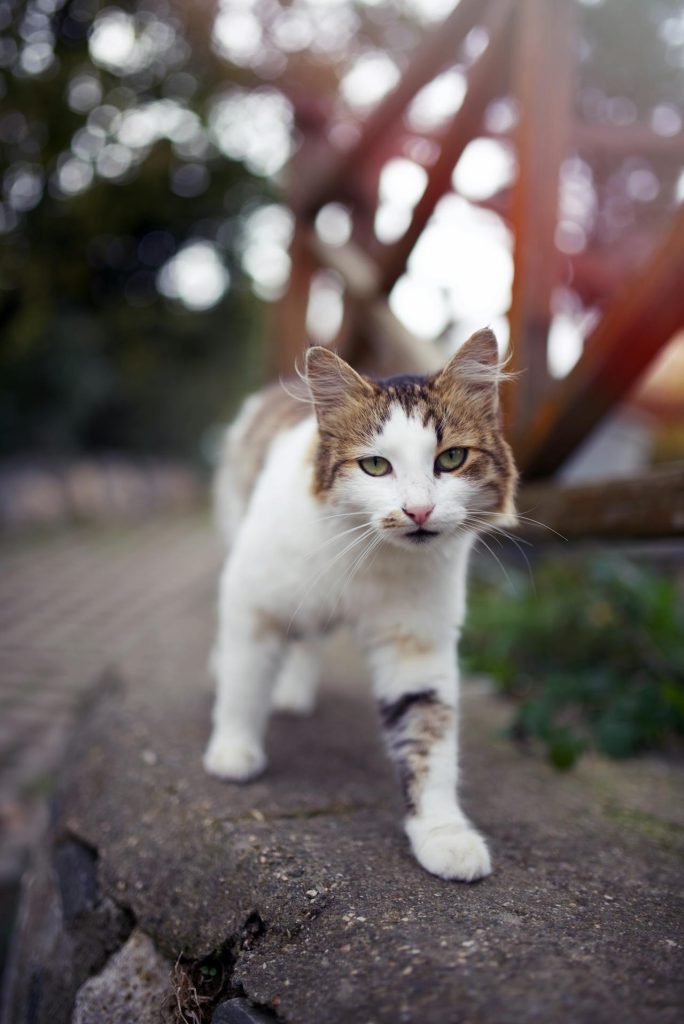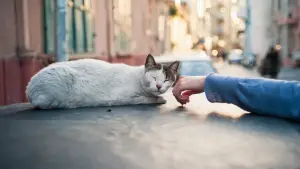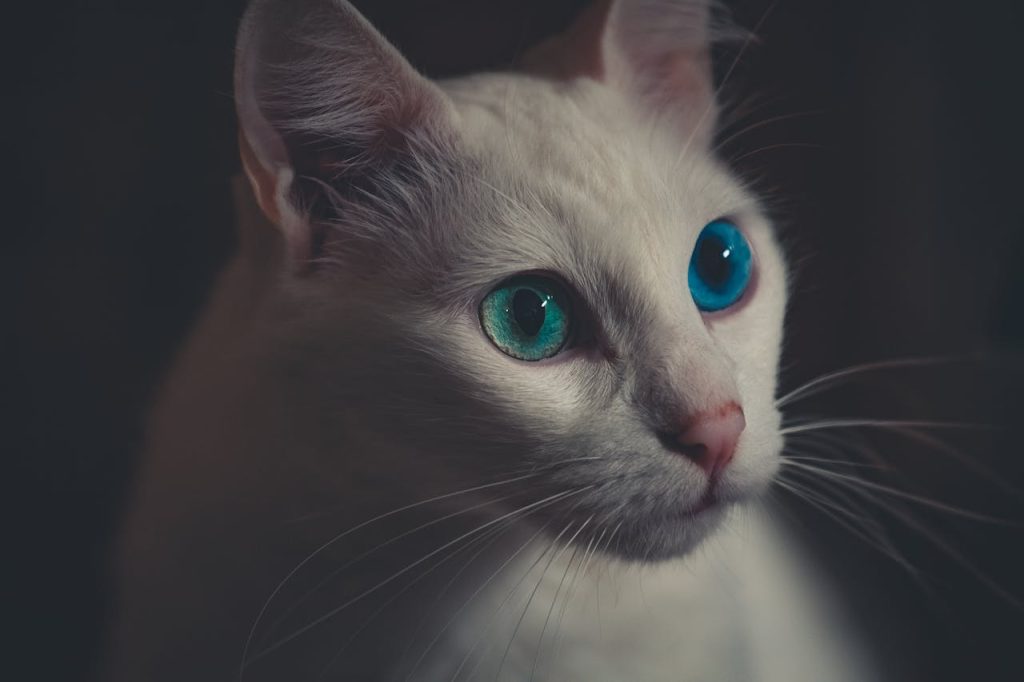
To remove cat urine smell from clothing, first identify stained areas by inspecting seams and hidden spots.
Blot the excess urine using a clean cloth, avoiding any rubbing.
Pre-treat with a 1:1 vinegar-water solution, let it soak, and rinse thoroughly. Apply an enzymatic cleaner, ensuring deep penetration, and let it sit.
Wash the clothes in cold water with mild detergent and baking soda. Air-dry outdoors to leverage sunlight’s natural disinfectant properties.
Regularly check and repeat if needed for persistent odors. For thorough odor eradication and maintenance tips, there’s more you can discover.
This post contains affiliate links. However all the information provided on this site are my own honest opinions. See more in Disclaimer.
Table of Contents
Key Takeaways
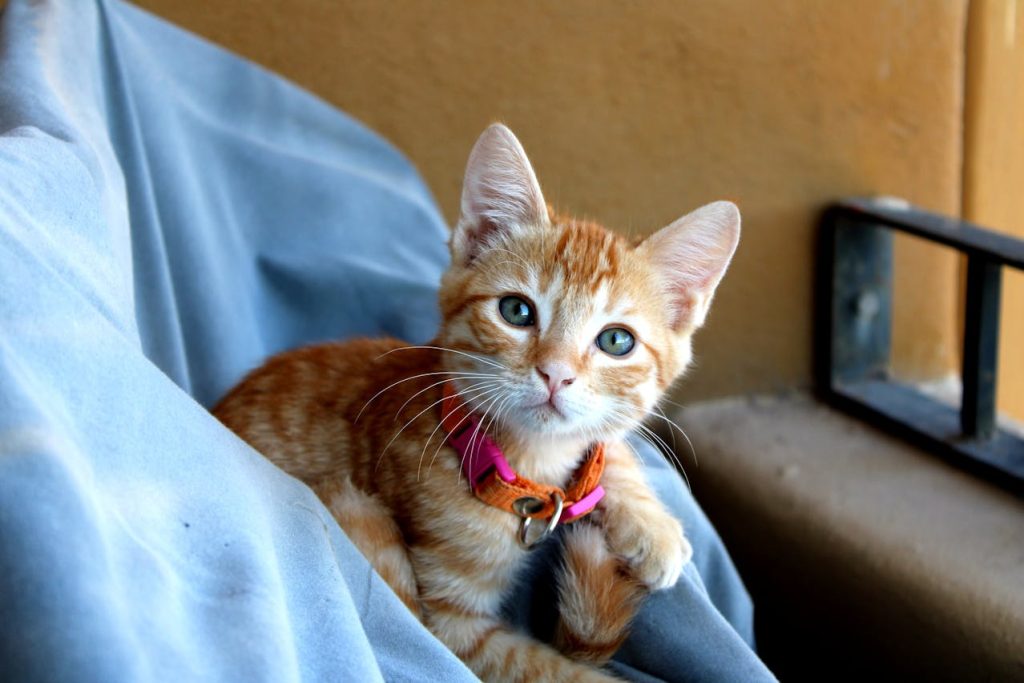
- Pre-treat stained areas with a 1:1 vinegar and water solution. Let it soak for 30 minutes before rinsing.
- Use enzymatic cleaners on identified stains to break down uric acid and eliminate odors.
- Wash clothing in cold water with a mild detergent. Inspect for lingering odors before drying.
- Add one cup of baking soda to the wash cycle for enhanced odor neutralization.
Identify the Stained Area
First, thoroughly inspect the area to pinpoint exactly where the cat urine stain is located. Start by finding a well-lit space to meticulously examine your clothing.
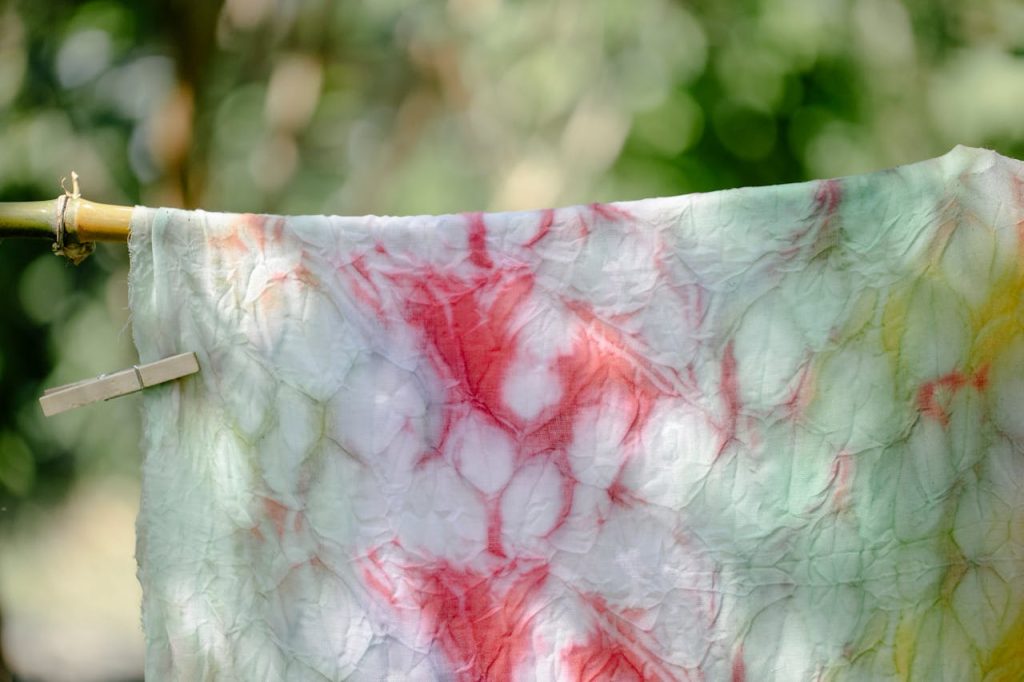
Cat urine can sometimes be tricky to spot due to its subtle coloration, especially on darker fabrics. Hold the clothing up to the light and look for any discoloration or dampness.
Understanding cat behavior can help you better identify the affected area. Cats often mark their territory by urinating in specific spots, which means the stain mightn’t always be in a highly visible area.
Pay special attention to seams, folds, and hidden parts of the garment where a cat might’ve chosen to mark.
Once you’ve identified the stain, consider the odor causes. Cat urine contains urea, ammonia, and other compounds that break down over time and release strong odors.
Also See:
Knowing this, you can anticipate where the smell might be strongest and focus your efforts there. Use your nose as a guide; sniffing the garment can help confirm you’ve found the right spot.
Identifying the exact location of the stain is essential for effective treatment and odor removal.
Blot the Excess Urine
Once you’ve pinpointed the exact location of the stain, grab a clean cloth or paper towel and gently blot the excess urine to prevent it from seeping deeper into the fabric.
Effective blotting techniques are vital here. Press the absorbent material firmly but gently against the stain, allowing it to soak up as much liquid as possible.
Avoid rubbing, as this can spread the urine and embed it further into the fibers.
To maximize the effectiveness of your blotting, consider the following steps:
Use layers. Stack multiple layers of paper towels or cloths to enhance absorption.
Apply pressure. Stand on the towel or press down with the palm of your hand to guarantee maximum contact.
Replace frequently. Swap out the cloth or paper towel as it becomes saturated to maintain high absorption.
Work from outside in. Blot from the outer edges toward the center to contain the stain.
Pre-Treat With Vinegar
To effectively neutralize the cat urine smell, begin by soaking the affected area with a vinegar solution.
You can enhance the cleaning power by combining vinegar with baking soda, which helps to lift and neutralize odors.
For washable items, use a vinegar rinse cycle to guarantee the odor is thoroughly removed.
Vinegar Soaking Method
Pre-treat the affected area by soaking it with a solution of equal parts white vinegar and water to break down the uric acid in the cat urine.

This method leverages the natural acidity of vinegar, which neutralizes the alkaline salts in the urine, eliminating odor effectively.
The vinegar benefits include its affordability, availability, and non-toxic nature, making it a safe choice for both you and your pets.
Here’s how to do it:
- Mix: Combine one part white vinegar with one part water in a large bowl or bucket.
- Soak: Submerge the urine-stained clothing in the solution, ensuring the fabric is fully saturated.
- Wait: Let the garment soak for at least 30 minutes, giving the vinegar time to break down the uric acid.
If you’re looking for vinegar alternatives, consider using enzymatic cleaners specifically designed for pet stains. These products break down uric acid more effectively than traditional cleaning agents.
Another alternative is hydrogen peroxide, which can also neutralize odors but should be tested on a small fabric area first to avoid discoloration.
Vinegar and Baking Soda
For a powerful one-two punch against stubborn cat urine odors, combine the pre-treating power of vinegar with the odor-neutralizing properties of baking soda.
First, the vinegar benefits will come into play by breaking down the uric acid in the urine, which is essential for eliminating the smell. Here’s how you can do it:
- Prepare a solution of one part white vinegar and three parts water.
- Saturate the urine-stained areas of the clothing with this vinegar solution.
- Allow the solution to sit for about 10-15 minutes to let the vinegar work its magic.
- Rinse the garment thoroughly with cold water.
Next, you’ll incorporate the baking soda uses. After rinsing, sprinkle a generous amount of baking soda directly onto the affected areas.
The baking soda will absorb any remaining odors and help lift the stain from the fabric.
Trending in Cats:
Let it sit for another 10-15 minutes before shaking off the excess.
Here’s a quick summary:
| Step | Ingredient | Purpose |
|---|---|---|
| 1 | Vinegar | Breaks down uric acid |
| 2 | Water | Dilutes and penetrates fabric |
| 3 | Baking Soda | Absorbs and neutralizes odor |
| 4 | Time | Allows ingredients to work |
Following these steps will guarantee a thorough pre-treatment, setting the stage for a more effective wash cycle.
Vinegar Rinse Cycle
During the rinse cycle, adding a cup of white vinegar directly to the washing machine will further break down any remaining uric acid and neutralize lingering odors.
Vinegar properties are highly effective in this regard due to its natural acidity.
This not only aids in dissolving uric acid crystals but also helps in eliminating the bacteria that cause the persistent smell.
To maximize the rinse effectiveness, follow these steps methodically:
- Measure precisely: Use exactly one cup of white vinegar to avoid any potential damage to your clothing.
- Distribute evenly: Pour the vinegar directly into the rinse cycle to guarantee it mixes thoroughly with the water and reaches all areas of the fabric.
- Run a full rinse cycle: Allow the washing machine to complete an entire rinse cycle to give the vinegar ample time to work.
Using vinegar in the rinse cycle effectively neutralizes odors and enhances the cleanliness of your laundry. This method leverages vinegar’s natural properties to guarantee your clothes come out smelling fresh and free from cat urine odor.
Apply Enzymatic Cleaner
First, identify the stained areas using a blacklight or by following the odor.
Pre-treat these spots with an enzymatic cleaner, allowing it to penetrate deeply into the fibers.
Afterward, wash the area thoroughly and inspect to guarantee the smell is completely gone.
Identify Stained Areas
To effectively eliminate cat urine smell, start by meticulously identifying all stained areas using a UV flashlight and your sense of smell.
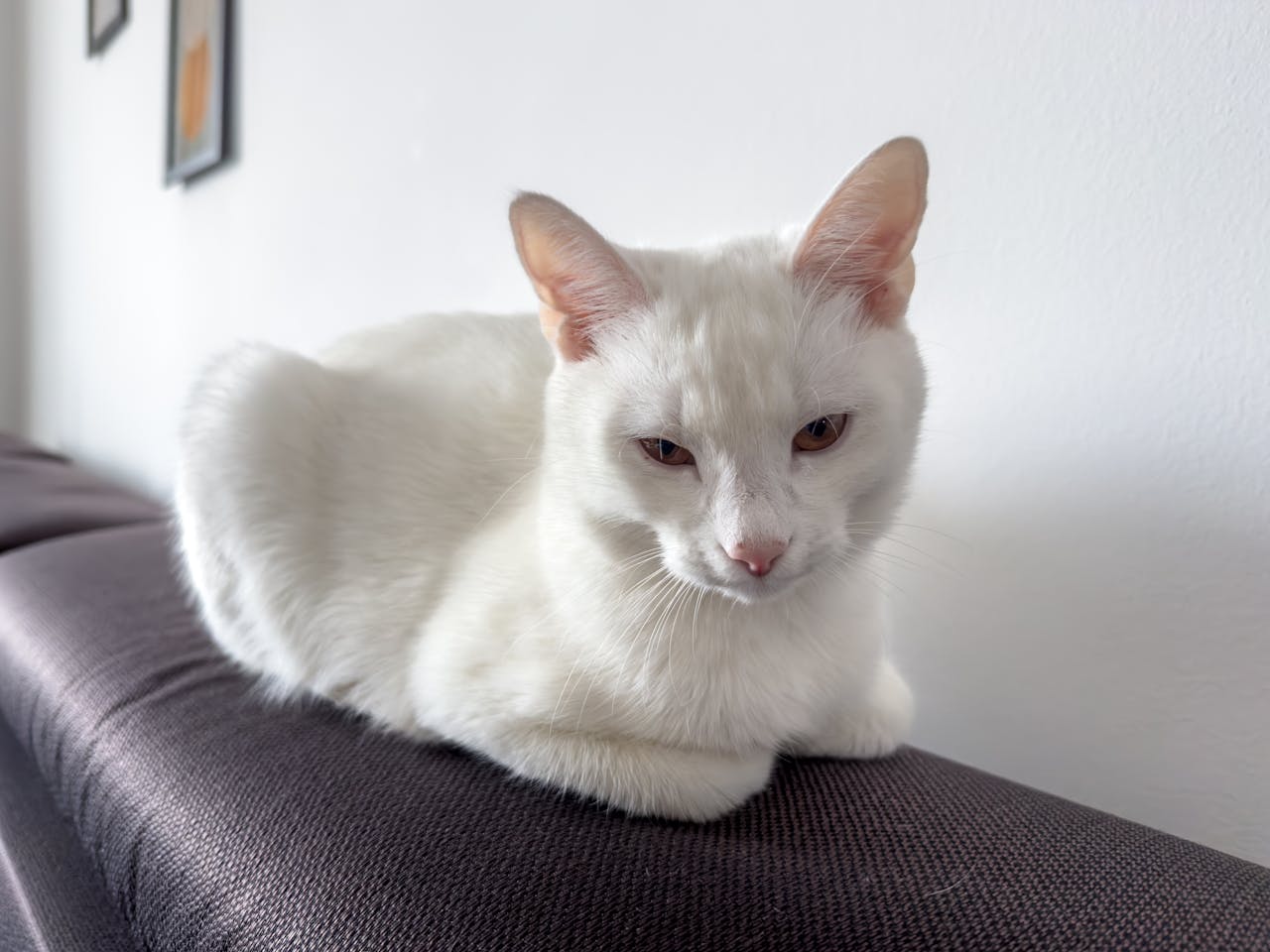
Cat behavior often leads them to mark specific spots repeatedly. It’s essential to locate all contaminated areas for thorough cleaning.
The UV flashlight helps you spot dried urine stains that are invisible to the naked eye. Your nose can pinpoint particularly strong odor sources.
When scanning your clothing, follow these steps for precise identification:
Inspect Seams and Folds: Cats may target less obvious spots, so pay special attention to seams, folds, and hidden areas.
Use a UV Flashlight: Shine the UV light over the fabric in a dark room. Urine stains will fluoresce, making it easier to locate them.
Sniff Test: After using the UV light, employ your sense of smell to confirm the presence of urine. This step guarantees you don’t miss any less visible stains.
Mark the Spots: Use small pieces of tape or sticky notes to mark identified areas. This helps you remember where to apply the enzymatic cleaner later.
Pre-Treat With Cleaner
An enzymatic cleaner breaks down the proteins in cat urine, effectively neutralizing the odor and preventing future marking.
To pre-treat your clothing, first select a quality enzymatic cleaner. These specialized cleaning solutions are designed to tackle tough stains and odors.
Start by applying the enzymatic cleaner directly to the stained area. Make certain it’s thoroughly saturated to allow the enzymes to penetrate the fabric fibers.
Let it sit for at least 15 minutes, but for heavily soiled areas, you might need to let it rest longer.
This step is vital as it allows the enzymes to break down the urine proteins effectively. Below is a quick guide to help you through the process:
| Step | Action |
|---|---|
| 1 | Apply enzymatic cleaner |
| 2 | Guarantee thorough saturation |
| 3 | Let it sit for 15+ minutes |
After the waiting period, gently blot the area with a clean cloth to remove any excess cleaner. Avoid rubbing, as this can spread the stain. Repeat the process if necessary.
Using enzymatic odor eliminators guarantees that the urine smell is not just masked but eliminated, making your clothing fresh and clean again.
Wash and Inspect
Once the enzymatic cleaner has done its job, wash the treated clothing in cold water using a mild detergent. This step is essential for confirming that any remaining residues from the cleaner and the cat urine are thoroughly removed.

Be mindful of your detergent choice; opt for a mild, eco-friendly detergent that won’t harm the fabric or interfere with the enzymatic cleaner’s effectiveness.
After washing, inspect the clothing carefully. Look for any lingering odors or stains. If you still detect a smell, don’t dry the clothing yet, as heat can set the odor permanently.
Instead, repeat the enzymatic treatment and wash cycle. Here’s a detailed approach to guarantee ideal fabric care:
- Choose a detergent: Use a mild, eco-friendly detergent that’s free of harsh chemicals.
- Inspect for stains: Before drying, confirm no stains or smells remain to avoid setting them permanently.
- Repeat if necessary: If odors persist, reapply the enzymatic cleaner and wash again.
Wash With Baking Soda
Baking soda is a powerful and natural deodorizer that can effectively neutralize cat urine odors when used correctly.
One of the major baking soda benefits is its ability to absorb and neutralize strong smells, making it an excellent addition to your laundry routine.
To start, you’ll want to fill your washing machine with the hottest water that’s safe for the fabric. Add the usual amount of detergent to the water, but here’s a vital laundry tip: include one cup of baking soda as well.
The baking soda will work in conjunction with the detergent to break down and neutralize the urine odor.
For heavily soiled garments, consider soaking them in a mixture of water and baking soda for 30 minutes before washing.
Once you’ve added the baking soda and detergent, let the washing machine run through a full cycle.
After the wash, inspect the clothing to confirm the smell is gone. If you still detect an odor, don’t hesitate to repeat the process.
By following these detailed steps, you’ll find that the cat urine smell is markedly reduced or completely eliminated, leaving your clothes fresh and clean.
Air Dry Outdoors
Harnessing the power of sunlight and fresh air can greatly enhance the removal of lingering cat urine odors from your fabrics.
Once you’ve treated your clothing by washing with baking soda or another effective solution, air drying outdoors offers several advantages in guaranteeing complete odor elimination.
First, the ultraviolet (UV) rays in sunlight act as a natural disinfectant. These UV rays break down the chemical compounds in cat urine that cause the unpleasant smell, effectively neutralizing the odor.
Sunlight Benefits: The sun’s rays help to kill bacteria and germs that contribute to the foul smell.
Natural Ventilation: Fresh air promotes the evaporation of any remaining moisture, which can trap odors.
Prevents Mold: Outdoor drying reduces the risk of mold and mildew, which can exacerbate the urine smell.
Energy Efficient: Air drying saves energy and is environmentally friendly compared to using a dryer.
To maximize these benefits, guarantee that the clothing is spread out evenly on a clothesline or drying rack.
Rotate the garments periodically to expose all areas to direct sunlight.
Prevention Tips
To prevent future cat urine issues, establish a routine that includes regular litter box maintenance and behavioral training for your cat.

Start by ensuring the litter box is always clean. Scoop waste daily and replace the litter entirely at least once a week. This not only keeps the area sanitary but also encourages your cat to use the box consistently.
Next, place the litter box in a quiet, easily accessible location. Cats prefer privacy, and a well-placed box can reduce the likelihood of accidents.
Make sure to provide one litter box per cat, plus an extra, to accommodate multiple pets and avoid overcrowding.
Behavioral training is also essential. Observe your cat for any signs of distress or health issues that may cause inappropriate urination.
If your cat frequently urinates outside the litter box, consult your veterinarian to rule out medical conditions.
Use positive reinforcement to encourage good behavior. Reward your cat with treats and praise when they use the litter box correctly.
Lastly, consider using calming sprays or diffusers if your cat seems stressed. These products can help reduce anxiety, making it less likely for your cat to urinate outside their designated area.
Frequently Asked Questions

You shouldn’t use bleach as it can damage fabric and doesn’t neutralize the smell. Opt for bleach alternatives like enzymatic cleaners, which break down urine molecules. These alternatives ensure proper fabric care while effectively removing the odor.
Using essential oils on cat urine stains is like using a double-edged sword. Essential oil safety is vital—some oils can be toxic to cats. Instead, consider cat urine alternatives like enzymatic cleaners for a safer solution.
You should leave enzymatic cleaners on the fabric for at least 15 minutes for proper enzyme activation. Depending on fabric types, you might need to let it sit longer. Test a small area first to verify effectiveness.
Yes, your cat’s behavior might be influenced by persistent urine scent. Cats are creatures of habit and can engage in scent marking. Thoroughly clean the area to prevent them from peeing in the same spot again.
You can use regular detergent, but its effectiveness may vary. For best results, pre-soak the clothes in a mix of water and baking soda. Follow up with an enzyme-based cleaner to guarantee thorough odor removal.
Conclusion
Imagine you’re getting ready for an important meeting, only to find your favorite shirt soaked in cat urine. Follow these steps methodically:
Identify the stained area, blot the excess urine, pre-treat with vinegar, apply an enzymatic cleaner, wash with baking soda, and air dry outdoors.
By using these expert techniques, you’ll guarantee your clothing remains fresh and odor-free, ready for any occasion.
Prevention, like keeping the litter box clean, can save you future hassle.
